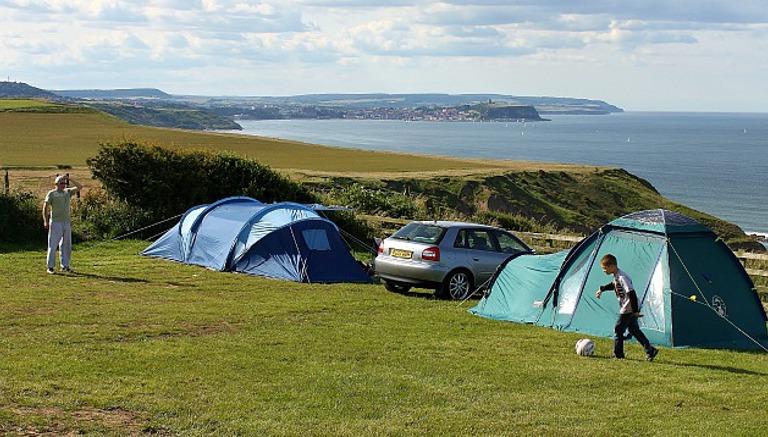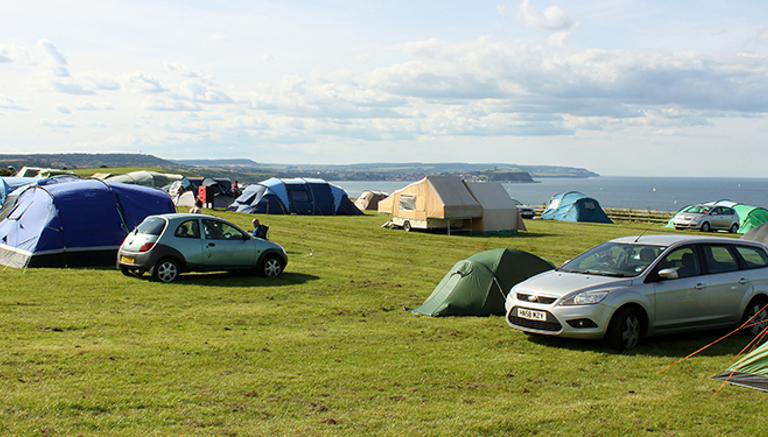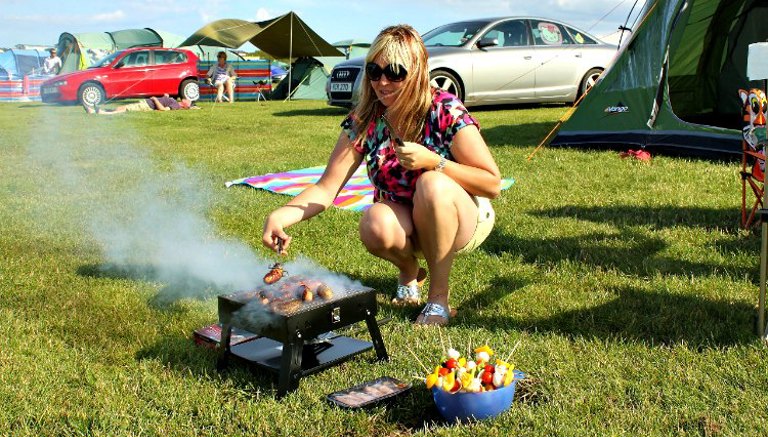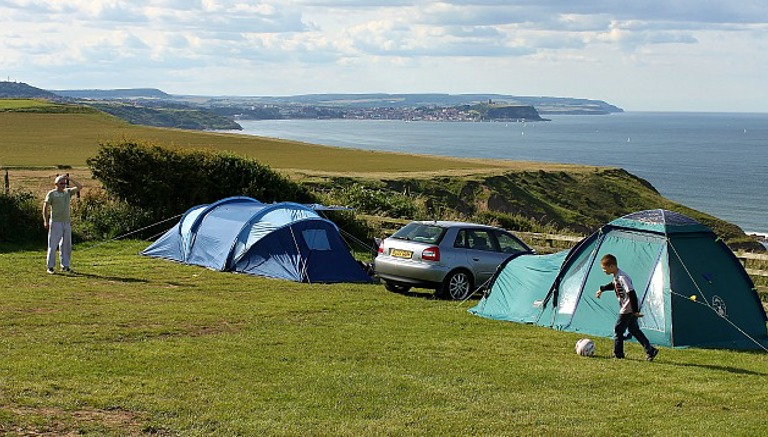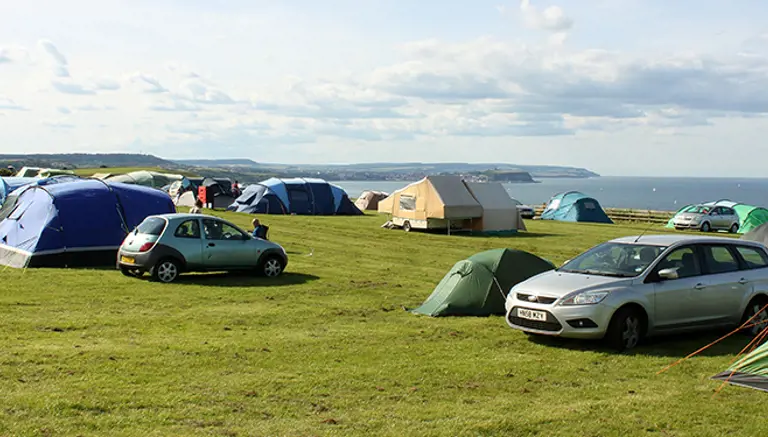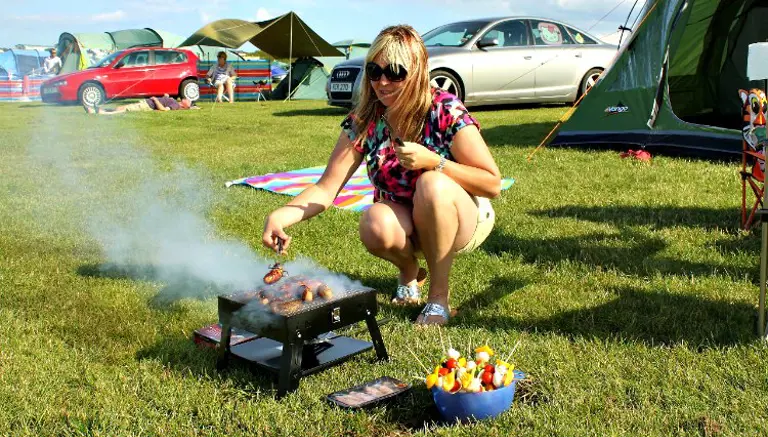Top Tips for Camping in Windy Conditions
14/10/2017
Crows Nest is a fabulous place to camp on the perfect summer day (and most other days too), enjoying a BBQ on the cliff top with amazing sea views and watching the sun go down with a glass of wine in hand.
Unfortunately being able to enjoy these views leaves us somewhat exposed to the elements – the worst for camping being the wind. Many camping trips have been cut short or ruined due to strong gusts… but this can also be down to the way you have pitched your tent and of course the quality of the equipment. Funnily enough a lot of the tents we find are cheap ones from Argos and Tesco. Here are a few tips on how best to pitch your tent in windy conditions so your tent is not one of the abandoned ones we find.
WATCH THE WEATHER FORECAST
A common question we get asked is what is the weather forecast… this makes us shake our head in dismay. Every person can access the exact same forecasts that we can so take advantage of this and come prepared. Before any camping trip, check the forecast for the area where you'll be traveling. Keep an eye on incoming rain, hail, or increasingly severe conditions, and plan accordingly.
DON'T BE A LONER
Extra hands are great at holding down lines to keep gear from flying away, and extra bodies will weigh down your tent at night. You'll have great stories to share for years to come and camping has been proven to reduce stress.
USE SHELTER WHERE POSSIBLE
Low bushes may offer a good mix of windbreak opportunity with low risk of injury. Do not forget that the best windbreak that you have is the vehicle that you arrived in.
BRING THE RIGHT GEAR
A 12-person family-style tent with an awning and room to stand up on a fellow camper's shoulders is not the best shelter in high-wind. The less surface a gust can push against, the better. Limit your tent selection to low-to-the ground, sturdy models that can ride out a rough patch.
RESEARCH WHAT YOU HAVE
Tents come with all sorts of ratings and recommendations, so be sure to familiarize yourself with yours. Look for maximum wind ratings, and pay attention to the numbers and what they mean. You may feel brave enough and savvy enough to survive a windstorm, but will your tent? Sure, you'll be OK, but consider the cost of buying a new place to sleep if your current home-away-from-home gets ripped to shreds.
IT'S ABOUT FACE
If you're happy with your tent, try to set it up so the wind flows over and around you. The last thing you want is to offer a breeze that's building into a bluster anything that looks like a ship's sail. Orient your tent so the narrow ends are facing into the winds.
TIME YOUR ARRIVAL
You can't do much if heavy winds arrive without warning, but if you're expecting it, do everything you can to hunker down before the gusts arrive or arrive after they have left. It's way easier to set up everything properly while it's calm, as opposed to trying to snag the necessary parts and pieces while getting buffeted.
DON'T SKIMP ON THE SETUP
Wild weather will exploit any weakness you give it, so be sure to stake everything properly, secure it well, and don't cut any corners. Rushing a step or two while you make camp may help you get out of the wind sooner, but can lead to bigger headaches later as repeated friction finally works a flap loose or tugs a shallow stake free.
COME AT IT FROM AN ANGLE
Avoid inserting your stakes straight into the ground, like a nail into a piece of wood. Instead, pound them in at a right angle so they can better resist forces trying to rip them free. Also, if wind camping is your thing, you may want to invest in grooved, wind-resistant stakes.
HANG WITH THE GUYS
Guy ropes can be a lifesaver or at least a tent-saver. Learn how to properly set up these lines that attach to the rainfly and add stability.
AVOID THE FLY IF YOU CAN
If it's not raining and you can manage it, refrain from putting the fly (also known as yet one more piece of fabric for the wind to play with) on your tent. In fact, you may want to open the tent up near the top, if possible, to allow air to flow through instead of pushing against the tent like a kite.
THINK LIKE A SAILOR
Learn a few different knots so you can secure ropes and lines of various thicknesses in a variety of circumstances. Be sure to stock your mental list with configurations that will hold what needs to be held secure and then can easily be undone later. You'll want to be able to break camp without having to sacrifice your nails to undo a lump of cord, or having to sacrifice the cord itself when you give up and cut it with a knife.
PREPARE FOR REPAIRS
Bring along a kit so you can sew and patch your tent up as needed, even if you're only going to be gone for one night.
DON'T BRING THE STOVE INSIDE
Of course you're not going to burn some logs in the center of your tent, but you may be tempted to set up your gas stove inside your shelter. Do not. Zipping into an enclosed space with your grill can be deadly, as the fumes it gives off can cause asphyxiation. If you absolutely need to light up a cooking system, keep it sheltered, keep it monitored, and keep it outside.
STAVE OFF BOREDOM
High winds may cancel your daytime plans or keep you up at night, so be sure to pack an engrossing book or deck of cards so you can pass the time without getting cabin fever.
ACCEPT IT
The wind's not going to stop moaning, whistling, and rattling just to let you get a little sleep. The sooner you give in to the fact that your tent walls aren't going to stop flapping all night, the sooner you'll get some actual shut-eye.
LIVE TO CAMP ANOTHER DAY
Don't let less-than-ideal weather scare you away from the outdoors, but don't be foolhardy, either. Know when to hold your own, and know when to fold your tent up and come home. If the weather gets bad, get out if it is safe to do so - frankly it is not worth getting hurt over.
Check availability and book online at www.crowsnestcaravanpark.com

